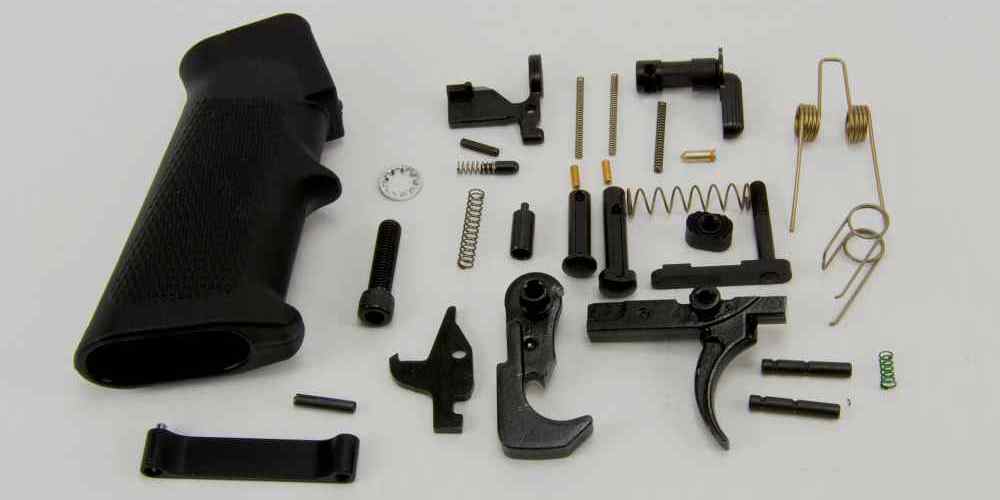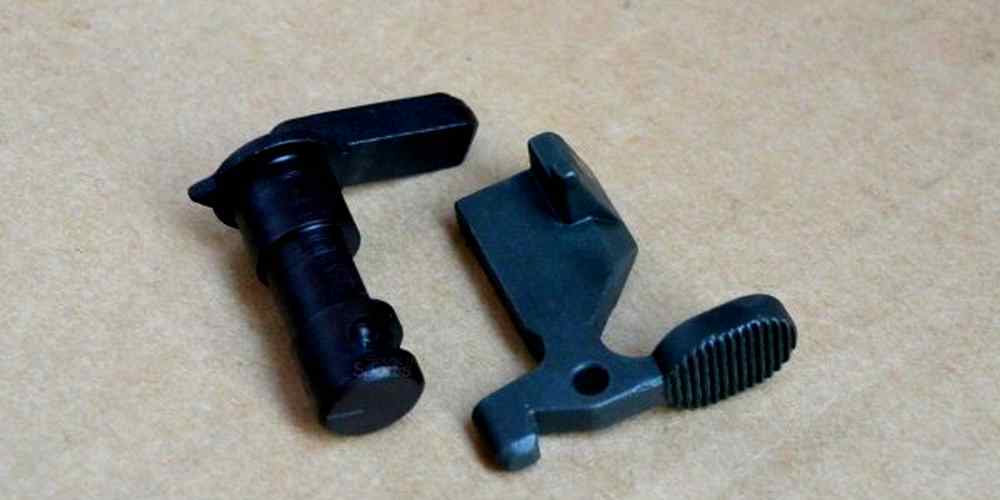“AR15 Lowers: Where Ergonomics Meets Performance”
Benefits of Lightweight AR15 Lowers
When it comes to building or customizing your AR15 rifle, one of the most important decisions you’ll have to make is choosing the right lower receiver. The lower receiver is the foundation of your rifle, connecting all the other components together. It plays a crucial role in determining the overall performance and ergonomics of your firearm. One key factor to consider when selecting a lower receiver is its weight.
Lightweight AR15 lowers offer a range of benefits that can enhance your shooting experience. One of the most obvious advantages of a lightweight lower is reduced overall weight of the rifle. A lighter rifle is easier to handle and maneuver, making it more comfortable to shoot for extended periods of time. This can be especially important for competitive shooters or hunters who may need to carry their rifle for long distances.
In addition to improved handling, a lightweight lower can also help to reduce fatigue and strain on your arms and shoulders. This can lead to more accurate shooting and better overall performance. The reduced weight can also make it easier to transition between targets quickly, giving you a competitive edge in fast-paced shooting scenarios.
Another benefit of a lightweight lower is improved balance. By reducing the weight of the lower receiver, you can achieve a more balanced rifle that is easier to control. This can help to minimize muzzle rise and recoil, allowing you to stay on target more effectively. A well-balanced rifle can also help to reduce shooter fatigue and improve accuracy, especially during rapid fire or high-stress situations.
Despite the benefits of lightweight AR15 lowers, it’s important to strike a balance between weight and durability. While a lightweight lower can offer improved handling and performance, it should still be strong enough to withstand the rigors of shooting and regular use. Look for lowers made from high-quality materials, such as aircraft-grade aluminum or polymer, that are designed to be both lightweight and durable.
When choosing a lightweight lower receiver, consider factors such as the material, design, and construction. Look for features such as reinforced areas around the buffer tube and pistol grip, as well as a solid trigger guard and magazine well. These design elements can help to improve the strength and durability of the lower receiver, while still keeping weight to a minimum.
In conclusion, lightweight AR15 lowers offer a range of benefits that can enhance your shooting experience. From improved handling and balance to reduced fatigue and strain, a lightweight lower can help you achieve better performance on the range or in the field. When choosing a lightweight lower receiver, be sure to consider factors such as material, design, and construction to ensure a balance between weight and durability. With the right lightweight lower, you can enjoy a more comfortable and effective shooting experience with your AR15 rifle.
Customization Options for AR15 Lowers
When it comes to customizing your AR15 rifle, one of the most important components to consider is the lower receiver. The lower receiver is the part of the rifle that houses the trigger group, magazine well, and buffer tube, among other components. It plays a crucial role in the overall performance and ergonomics of the rifle, so choosing the right lower receiver is essential.

There are a wide variety of options available when it comes to AR15 lowers, each with its own set of features and benefits. One of the key factors to consider when selecting a lower receiver is ergonomics. The ergonomics of a lower receiver can greatly impact how comfortable and easy it is to handle and shoot the rifle.
One popular option for improving the ergonomics of an AR15 lower receiver is to choose one with an adjustable stock. Adjustable stocks allow you to customize the length of pull to fit your individual preferences and shooting style. This can help improve your accuracy and overall shooting experience.
Another important factor to consider when choosing an AR15 lower receiver is performance. The performance of a lower receiver can be influenced by a number of factors, including material, weight, and design. For example, lower receivers made from high-quality materials like aluminum or polymer are generally more durable and reliable than lower receivers made from cheaper materials.
Weight is also an important consideration when it comes to performance. A lighter lower receiver can help reduce overall rifle weight, making it easier to handle and carry for extended periods of time. However, it’s important to strike a balance between weight and durability, as a lower receiver that is too light may not be as sturdy or reliable as a heavier one.
In addition to material and weight, the design of the lower receiver can also impact performance. Some lower receivers feature enhanced features like ambidextrous controls, enlarged trigger guards, and flared magazine wells, which can improve handling and ease of use. These features can be especially beneficial for competitive shooters or those who use their rifles for tactical purposes.
Ultimately, the key to finding the right balance between ergonomics and performance when customizing your AR15 lower receiver is to consider your individual needs and preferences. Take the time to research different options and choose a lower receiver that best fits your shooting style and intended use.
In conclusion, customizing your AR15 lower receiver is a great way to improve the ergonomics and performance of your rifle. By choosing a lower receiver with adjustable features, high-quality materials, and a thoughtful design, you can create a rifle that is comfortable to shoot and performs at its best. So take the time to explore your options and find the perfect AR15 lower receiver for your needs.
Enhancing Accuracy with AR15 Lowers
When it comes to enhancing the accuracy of your AR15 rifle, one of the key components to consider is the lower receiver. The lower receiver is the foundation of your rifle, connecting all the other parts together and providing a stable platform for shooting. Choosing the right lower receiver can make a significant difference in the performance of your rifle, so it’s important to find a balance between ergonomics and performance.
One of the first things to consider when selecting a lower receiver is the material it’s made from. Lower receivers are typically made from either aluminum or polymer. Aluminum lowers are known for their durability and strength, making them a popular choice among shooters who prioritize performance. On the other hand, polymer lowers are lighter and more affordable, making them a good option for those who value ergonomics and comfort.
Another factor to consider is the design of the lower receiver. Some lower receivers feature a traditional design with a fixed stock, while others have a more modern design with a collapsible stock. The choice between these two designs ultimately comes down to personal preference and shooting style. A collapsible stock can provide added versatility and adjustability, while a fixed stock can offer more stability and consistency.
In addition to material and design, the size and shape of the lower receiver can also impact accuracy. A lower receiver with a more ergonomic grip can help improve your shooting technique and reduce fatigue during long shooting sessions. Some lower receivers also feature an enlarged trigger guard, which can make it easier to shoot with gloves on or in cold weather conditions.
When it comes to enhancing accuracy with AR15 lowers, it’s important to find a balance between ergonomics and performance. Choosing a lower receiver that is comfortable to shoot with and provides a stable platform for shooting can help you achieve better accuracy and consistency on the range. By considering factors such as material, design, and size, you can find a lower receiver that meets your needs and helps you take your shooting to the next level.
In conclusion, the lower receiver is a critical component of your AR15 rifle that can have a significant impact on accuracy and performance. By choosing a lower receiver that balances ergonomics and performance, you can enhance your shooting experience and improve your accuracy on the range. Whether you prioritize durability, comfort, or adjustability, there are a variety of lower receivers available to suit your needs. Take the time to research and test different options to find the perfect lower receiver for your AR15 rifle.
Material Choices for AR15 Lowers
When it comes to building or customizing an AR15 rifle, one of the most important decisions you’ll need to make is choosing the right lower receiver. The lower receiver is the foundation of your rifle, connecting all the other components together. It’s crucial to find a balance between ergonomics and performance when selecting a lower receiver for your AR15.
One of the first things to consider when choosing a lower receiver is the material it’s made from. The most common materials used for AR15 lowers are aluminum and polymer. Aluminum lowers are known for their durability and strength, making them a popular choice among gun enthusiasts. They can withstand a lot of wear and tear and are less likely to crack or break under pressure.
On the other hand, polymer lowers are lighter in weight and can be more comfortable to hold for extended periods. They also tend to be more affordable than aluminum lowers, making them a great option for budget-conscious shooters. However, polymer lowers may not be as durable as aluminum lowers and may not hold up as well under heavy use.
Another material choice to consider is forged versus billet lowers. Forged lowers are made by hammering a piece of aluminum into shape, resulting in a stronger and more durable lower receiver. Billet lowers, on the other hand, are machined from a solid block of aluminum, allowing for more intricate designs and customization options.
Both forged and billet lowers have their own advantages and disadvantages. Forged lowers are generally more affordable and offer better strength and durability. Billet lowers, on the other hand, are more customizable and can be made with unique designs and features. Ultimately, the choice between forged and billet lowers comes down to personal preference and budget.
When choosing a lower receiver for your AR15, it’s important to consider how it will feel in your hands. Ergonomics play a crucial role in how comfortable and easy to use your rifle will be. Look for lower receivers with ergonomic features such as a flared magazine well, an enlarged trigger guard, and a textured grip for better control.
It’s also important to consider the compatibility of the lower receiver with other components of your AR15. Make sure the lower receiver is compatible with the upper receiver, buffer tube, and other parts you plan to use. This will ensure that all the components fit together properly and function smoothly.
In conclusion, when choosing a lower receiver for your AR15, it’s important to find a balance between ergonomics and performance. Consider the material, design, and compatibility of the lower receiver to ensure that it meets your needs and preferences. Whether you choose an aluminum or polymer lower, forged or billet, prioritize durability, comfort, and functionality to build a rifle that suits your shooting style and preferences.
Improving Durability of AR15 Lowers
When it comes to building or customizing your AR15 rifle, one of the most important components to consider is the lower receiver. The lower receiver is the part of the rifle that houses the trigger group, magazine well, and buffer tube, and serves as the foundation for the rest of the rifle. Choosing the right lower receiver can have a significant impact on the overall performance and ergonomics of your AR15.
One of the key factors to consider when selecting a lower receiver is durability. A durable lower receiver is essential for ensuring the longevity and reliability of your rifle. A lower receiver that is not built to withstand the rigors of shooting can lead to malfunctions and potentially dangerous situations. Fortunately, there are several ways to improve the durability of your AR15 lower receiver.
One of the most effective ways to improve the durability of your AR15 lower receiver is to choose a high-quality material. Lower receivers are typically made from either aluminum or polymer. Aluminum lower receivers are known for their strength and durability, making them a popular choice among shooters. Polymer lower receivers, on the other hand, are lightweight and corrosion-resistant, but may not be as durable as aluminum. When choosing a lower receiver, it is important to consider the type of shooting you will be doing and select a material that best suits your needs.
In addition to selecting the right material, there are other ways to improve the durability of your AR15 lower receiver. One option is to invest in a lower receiver that has been treated with a protective coating. Coatings such as anodizing or Cerakote can help protect the lower receiver from corrosion and wear, extending its lifespan and improving its overall durability.
Another way to improve the durability of your AR15 lower receiver is to choose a lower receiver that has been reinforced in key areas. Some lower receivers feature reinforced buffer tube threads or extra material around the pivot pin area to prevent cracking or damage. These reinforcements can help ensure that your lower receiver can withstand the stresses of shooting and remain in good condition for years to come.
When it comes to balancing ergonomics and performance, it is important to consider how the design of the lower receiver can impact your shooting experience. A lower receiver with a comfortable grip and well-placed controls can make it easier to handle and operate your rifle, improving your overall shooting performance.
One way to improve the ergonomics of your AR15 lower receiver is to choose a lower receiver with an ergonomic grip. Grips with a more vertical angle or textured surface can provide a more comfortable and secure hold on your rifle, reducing fatigue and improving your shooting accuracy. Additionally, lower receivers with ambidextrous controls or adjustable components can help customize the rifle to fit your individual shooting style and preferences.
In conclusion, when it comes to selecting an AR15 lower receiver, it is important to balance durability and ergonomics to ensure optimal performance. By choosing a high-quality material, investing in protective coatings, and selecting a lower receiver with reinforced areas, you can improve the durability of your rifle. Additionally, choosing a lower receiver with ergonomic features can enhance your shooting experience and help you achieve better performance on the range. By carefully considering these factors, you can build a rifle that is both reliable and comfortable to shoot.





